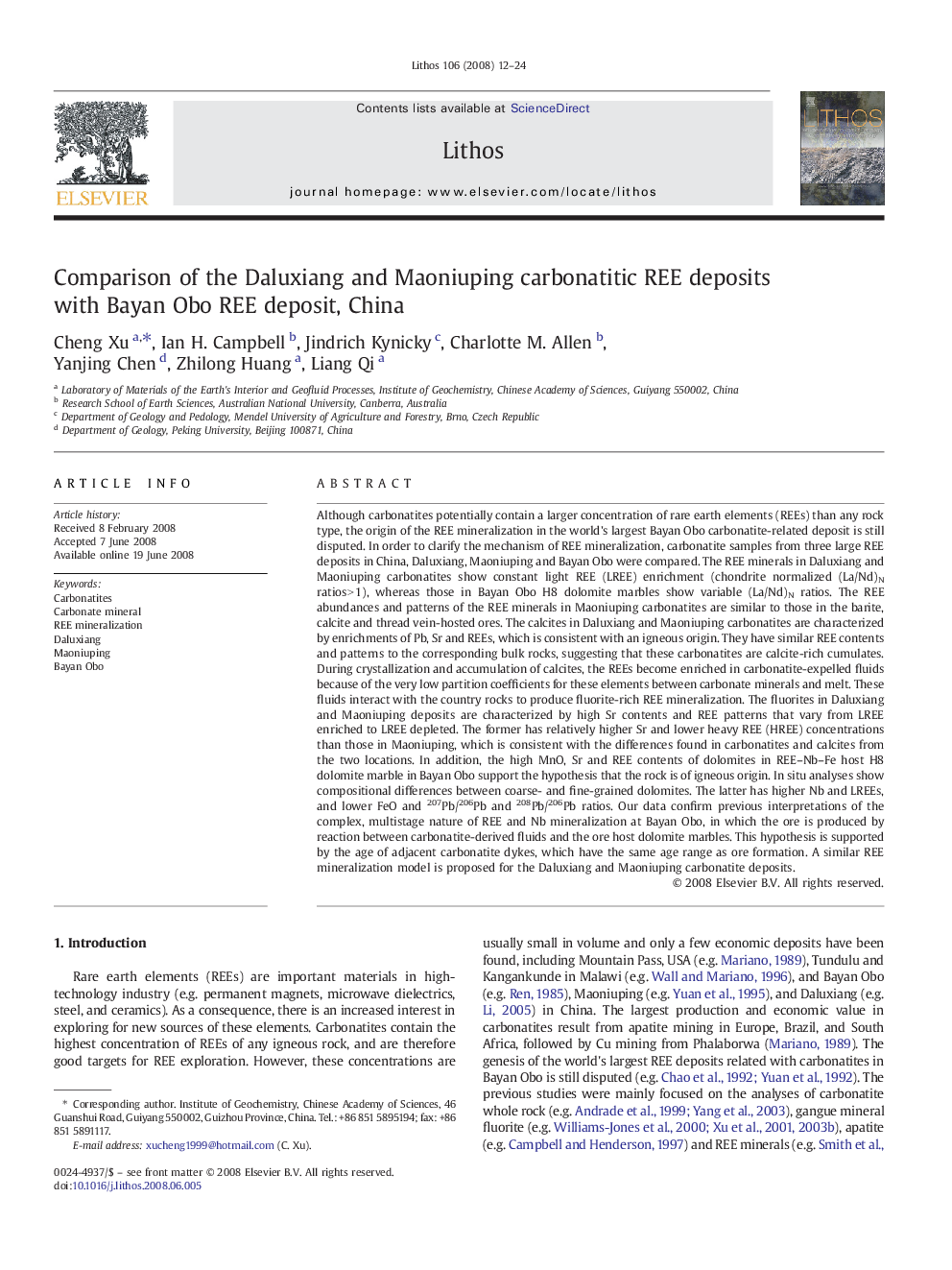| Article ID | Journal | Published Year | Pages | File Type |
|---|---|---|---|---|
| 4717489 | Lithos | 2008 | 13 Pages |
Although carbonatites potentially contain a larger concentration of rare earth elements (REEs) than any rock type, the origin of the REE mineralization in the world's largest Bayan Obo carbonatite-related deposit is still disputed. In order to clarify the mechanism of REE mineralization, carbonatite samples from three large REE deposits in China, Daluxiang, Maoniuping and Bayan Obo were compared. The REE minerals in Daluxiang and Maoniuping carbonatites show constant light REE (LREE) enrichment (chondrite normalized (La/Nd)N ratios > 1), whereas those in Bayan Obo H8 dolomite marbles show variable (La/Nd)N ratios. The REE abundances and patterns of the REE minerals in Maoniuping carbonatites are similar to those in the barite, calcite and thread vein-hosted ores. The calcites in Daluxiang and Maoniuping carbonatites are characterized by enrichments of Pb, Sr and REEs, which is consistent with an igneous origin. They have similar REE contents and patterns to the corresponding bulk rocks, suggesting that these carbonatites are calcite-rich cumulates. During crystallization and accumulation of calcites, the REEs become enriched in carbonatite-expelled fluids because of the very low partition coefficients for these elements between carbonate minerals and melt. These fluids interact with the country rocks to produce fluorite-rich REE mineralization. The fluorites in Daluxiang and Maoniuping deposits are characterized by high Sr contents and REE patterns that vary from LREE enriched to LREE depleted. The former has relatively higher Sr and lower heavy REE (HREE) concentrations than those in Maoniuping, which is consistent with the differences found in carbonatites and calcites from the two locations. In addition, the high MnO, Sr and REE contents of dolomites in REE–Nb–Fe host H8 dolomite marble in Bayan Obo support the hypothesis that the rock is of igneous origin. In situ analyses show compositional differences between coarse- and fine-grained dolomites. The latter has higher Nb and LREEs, and lower FeO and 207Pb/206Pb and 208Pb/206Pb ratios. Our data confirm previous interpretations of the complex, multistage nature of REE and Nb mineralization at Bayan Obo, in which the ore is produced by reaction between carbonatite-derived fluids and the ore host dolomite marbles. This hypothesis is supported by the age of adjacent carbonatite dykes, which have the same age range as ore formation. A similar REE mineralization model is proposed for the Daluxiang and Maoniuping carbonatite deposits.
